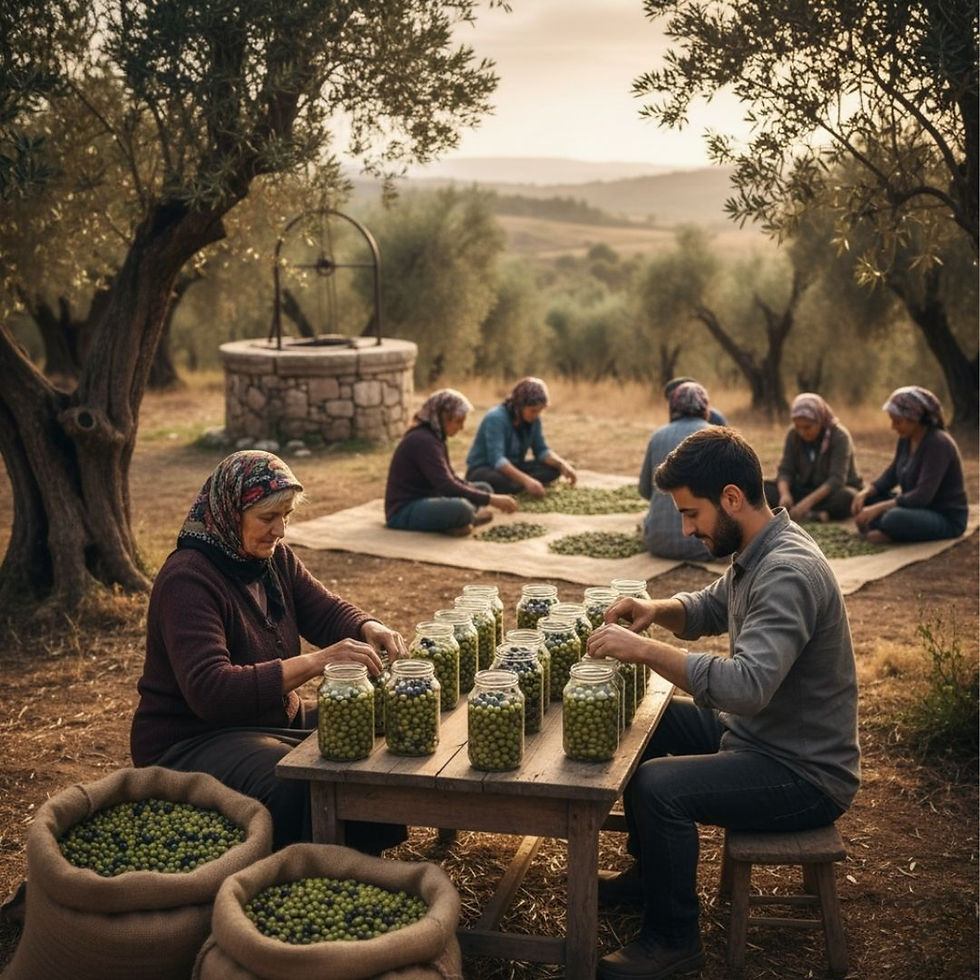Gemlik's Signature: What is Sele Olive? Differences Between Dry and Oily Sele Olives
- fethi çelik

- Sep 22
- 1 min read
If you enjoy olives, you've undoubtedly heard the term "Sele Olive." This traditional method, particularly associated with Gemlik, produces olives in their most delicious and rich form. So, what is Sele, and what are the differences between its varieties?
The Saddle Method: The Dance of Salt and Patience
Sele is the sweetening of fully ripe Gemlik olives on the vine using only salt. Unlike the brine (salt water) method, olives in Selle are not kept in water. Instead, the olives are placed in layers in special containers with salt.
During this natural fermentation process, salt draws out the olives' bitter juices. The containers are turned regularly (hence the name "rolling olives"). As the olives lose their juices, they shrivel, taking on their characteristic curly appearance. This process takes months and requires patience.
Dry Cured
This is the most traditional method. Olives lose most of their water while ripening with salt.
Appearance: Quite curly and matte.
Flavor: The salt content is more pronounced, the olive flavor is intense.
Texture: Harder and denser.
Oil Cured
It's a more modern approach. Once the ripening process is complete, the olives are purified from excess salt and stored in vegetable oil.
Appearance: Shiny and fuller.
Flavor: The oiling process balances the salt, providing a milder flavor.
Texture: Softer than dry saddle.
The choice depends entirely on taste. Both methods deliver the authentic, chemical-free Gemlik flavor.




Comments